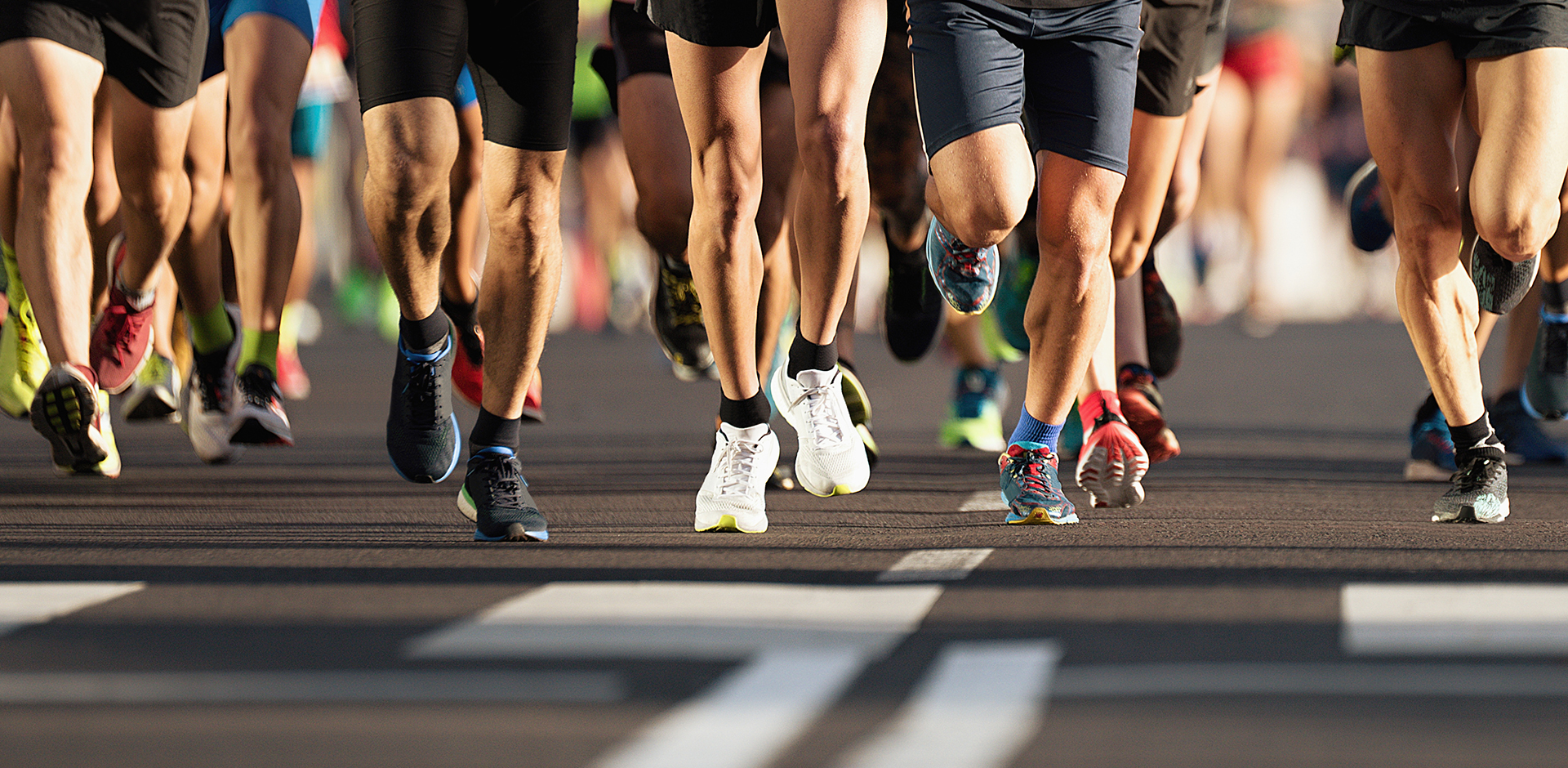The run can be represented by a gait cycle analysis, which is defined as a movement in which at least one foot touches the ground.
The phase of the run
The phase of the run is called a situation in which both feet are torn off the ground during the cycle. A cycle is a period of time that counts from the initial touch of the ground by the foot and ends with the repeated touch of the ground by the same foot. There are two phases of the cycle: support and swing. The first one begins with the initial contact of the foot with the ground, and the middle part of it from the detachment of the toes and the foot. This phase takes about 40% of the gait cycle. Usually, in the case of sprint runners it is much shorter. Then we go to the phase of swing, which starts with the climb, moving on to swing forward or backward and ends with contact with the ground, which completes the cycle and initiates the next one.
Starting the cycle, before the initial contact with the surface, we activate the quadriceps muscle, and in particular the straight thigh muscle. When the foot touches the surface, the muscles work to dissipate the impact force. In this phase, separate foot movements occur. It starts with the ankle joint, which inversions (combination of flexion, adduction and supination) and eversions (combination of extension, abduction and pronation). With this interaction of the feet there is a minimal turnover of the rate inwards, the so-called pronation, which is involved in the shock absorption by the distributed impact forces on the entire foot surface in the middle phase of the support. A foot with too low pronation affects the substrate only with its lateral part, making the weakening of the impact impossible. The consequences that follow are, for example, chronic tension of the Achilles tendon, excessive load on the back of the calves, knee pain. However, a foot with too high pronation can lead to pain in the tibia, anterior calf and medial knee pain due to internal rotation of the tibia. As you can see, both foot positions can lead to many injuries.
Beginning the swing phase, when the foot is in the central part of the support phase, the muscles bending the leg in the hip joint, femoral knee flexors, quadriceps muscles and calf muscles work together to tear the leg off the ground. As one leg moves forward, the other prepares to start its cycle. After touching the foot with the ground, this leg begins to move forward as a result of anterior rotation of the pelvis and simultaneous hip flexion by the lumbar muscles. The femoral knee flexors activate and lengthen during the leg passing through the vomiting phase, limiting the straightening of the leg by a trapezius muscle. In the next step, the lower leg and foot fall onto the surface creating one line from the head to the fingers before the foot hits the ground.
During the walk, muscles during the phase do not work oppositely, while running, simultaneously opposing muscle groups take part, resisting or stabilizing movement. The torso ensures stabilization of the upper body, which allows the pelvis to rotate and tilt in the correct way. The pelvis has a very important task to stabilize the torso. An unstable torso may adversely affect during the cycle, leading to injuries.
An important element is also the hands that are responsible for stabilization and balance, but in a slightly different way. The hands are a counterbalance to the opposite leg. So, when the right hand goes forward, the left leg goes with it, maintaining the torso stability and its proper position. Thanks to this mechanics, the hands move forward and backwards, instead of swinging from side to side. Try to catch your hands behind you and run without using them. It is difficult to maintain body stability. The bad economics of running can be called the movement of swinging hands to the sides or straightening hands in the elbows, it requires a significant increase in energy expenditure.
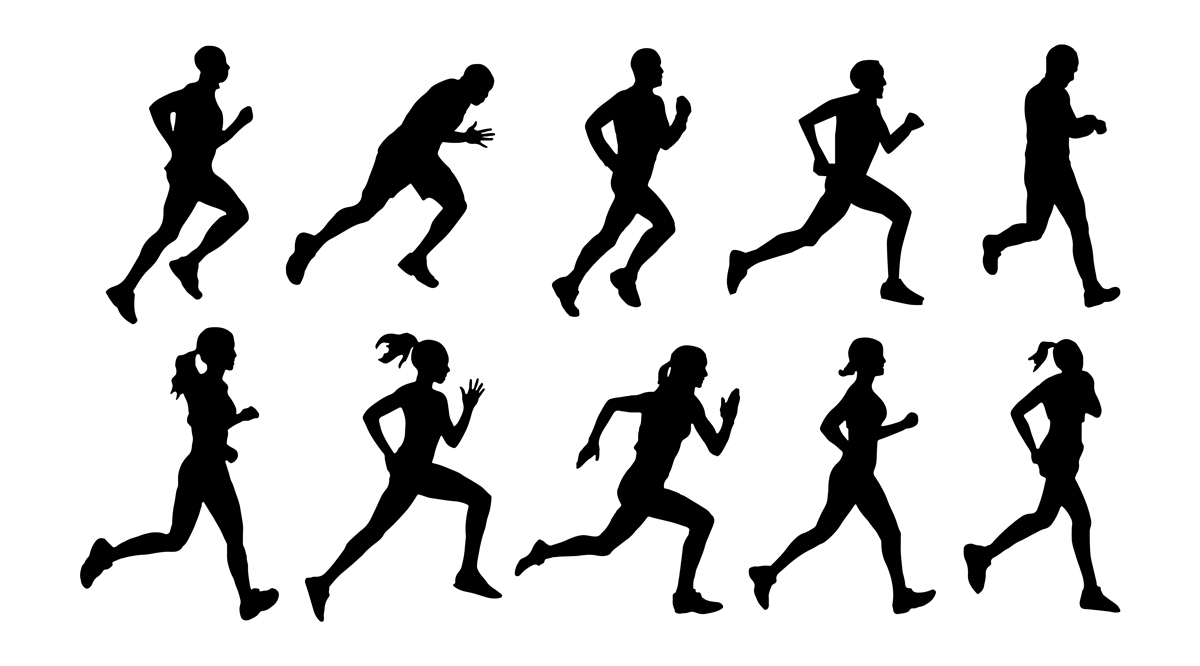
Neutral foot setting
Running is one of the cheapest and may seem the easiest sports in the world, but it is not entirely true. Do you think that you only need sports clothes, shoes and willingness? Unfortunately, looking at the runners, which I often pass while going to work, I see them make numerous mistakes, rapidly accelerating the process of destroying tendons and soft tissues, which occurs every time they hit the ground with their feet. On average, when running at a rate of approx. 5.30 min / km, we perform about 160 steps per minute, i.e. a 30-minute run, up to 4,800 foot hits. It's not about shoes, it's about your body, posture and technique. Often you can see people running overweight on the streets; each successive blow is death for their tendons and tissues. They should start with a proper diet, then a faster walk or cycling. After preparing the body in this way, you can start the adventure with running.
Being an athlete is sacrifice, hard work and effort. If you intend to require it from your body, then you should provide it with adequate support. Not only athletes, but also amateurs should focus on this. Providing adequate support means continuous work on the implementation and application of appropriate practices, such as:
• adopting appropriate and optimal positions that give better results, exercise and improvement of good positions and motor habits;
• developing the movement system to work in the full range;
• work on strength and fitness, which will help maintain correct body posture during the initial and final run phase.
And what about the attitude and technique mentioned earlier? A modern lifestyle is not very helpful in developing and strengthening our muscles. Office work, driving a car, long hours that we spend in a sitting position, lead to the disappearance of joints and muscles. A slouched back and bowed head (a position that often takes on a computer or phone) have a bad effect on our feet, yes feet. Let's start with them. Setting the feet should be neutral, ie the toes are directed straight ahead (not only when running, but even when walking and standing), not inside or outside. Thanks to this, you will create a solid foundation that will ensure proper posture. Using the movement apparatus in accordance with what has been "designed" and its intended purpose reduces all tensions leading to injuries and joint wasting. How do you get a running habit with neutral feet? At the beginning, start with thinking about straightening them out during the day, when walking, sitting and during different exercises; start controlling yourself during walks and running. Changing the way the feet are set not only calls for responsibility, which requires daily work to set them up, but also to free yourself from the conviction that it is enough to buy good shoes for long running. Thanks to the appropriate position the body is able to enter a higher level of performance.
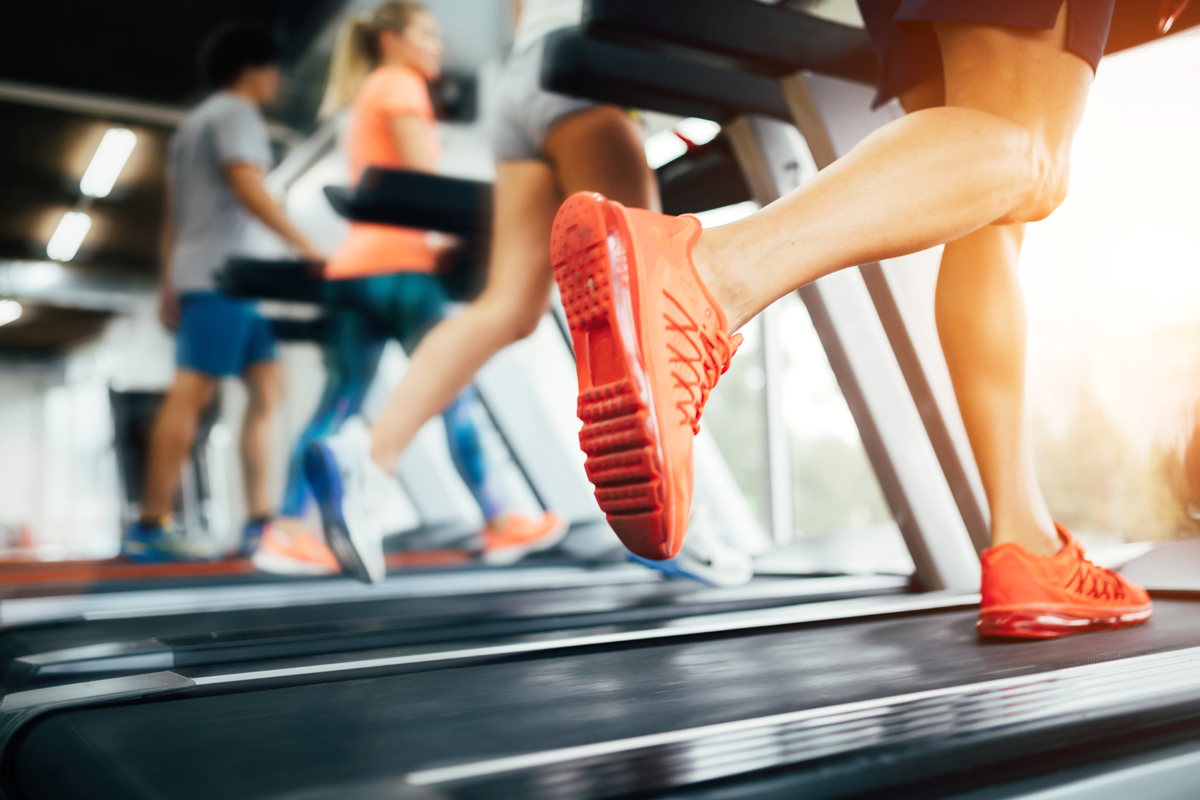
Back Band
Not only should the feet be positioned in a neutral position, the spine and pelvis should also be correctly positioned, this is the basis for the correct position of the body, which should be taken care of both on a daily basis and during training. The benefits that result from the correct posture will help to avoid injury, lower back pain. This position allows for free flow of power over the back band, i.e. calf, thigh, hip and back muscles, so you gain the opportunity to increase the intensity of training through the full involvement of the above-mentioned muscles. While we maintain the wrong posture, the smaller muscle parts are too heavy; it is not difficult to bring the hip flexors to fatigue, and consequently - contractures that do not allow lifting the leg up, although the gluteal muscle could continue to work. During this technique of running, we stop pushing the hip forward, the step becomes shorter, and we have to perform a higher frequency of steps, which leads to faster fatigue.
Pelvic girdle technique
Another important and perhaps the most important point of the technique applies to the hips. Hips can be described as a driving motor for runners. Round and firm buttocks are just a side effect of the hard work you should do during the complementary training. The improvement of the technique, thanks to which you will increase the strength, will allow you to fully activate your gluteal muscles and avoid hip folding, which is caused by contractures of the uptight fascia tissues surrounding your rectifier muscles or hip flexors. Consequences in the form of muscle imbalance of the pelvic girdle cause low-economic running style and lead to injuries that Rafał Hejna, physiotherapist and biomechanics from Rehasport Clinic mentions "caused by long-sitting irritation of the ligaments in the sacroiliac joints, and as a result contracture of the biceps muscle, and limiting the range of motion in the hip joint results in the increase of muscle tension within the hip joint. Among other things, they effectively obstruct attempts to increase speed by lengthening the pace. "
Maintaining the correct length of the hip joint allows for proper rebounding from the back leg, thanks to which we will obtain the right gravity to move, instead of giving in to it, bending in half. The hip and lumbar muscle is one of the most powerful muscles in the human body, but it is often forgotten by its location (it is hidden deep in the abdomen).
"The purpose of the iliopsoas muscle during movement is to straighten and stabilize the lumbar spine while bending the hip. Thanks to his proper work, we can run fast, and the strong hip and lumbar muscle protects us against pain in the lower spine," explains R. Hejna.
"The iliopsoas muscle plays a large role in the muscular balance of the pelvis, the spine in a standing position, and, of course, in the loading position of one limb. After all, running is largely moving on one leg. The girdle loads are therefore enormous. And if everything works perfectly, then there is no fear. However, let's think about what may happen when we start limping, for example due to an incorrect foot position, asymmetric step or pain. The loads increase, the compensatory work of muscles unloaded symmetrically is disturbed and an injury may occur "- said Dr. Tomasz Piontek, MD.
One of the most important exercises to check your readiness to run is the ability to perform a deep squat. Below I will show you how you can check if you are doing this correctly.
How to perform correct squat?
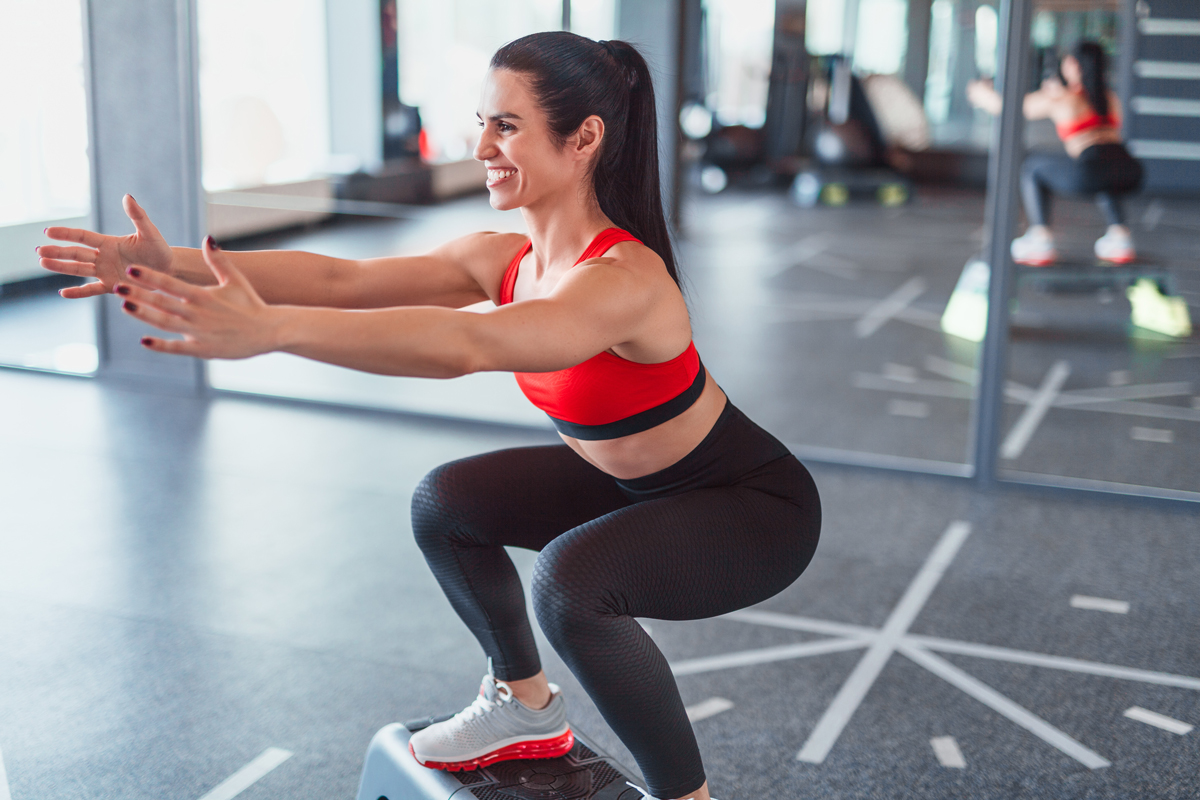
The easiest way to check how you perform the squat will be to record your own exercise and analyze it according to the following criteria. Remember to follow a few rules:
• set the feet at shoulder width, in parallel, toes may be slightly directed to the outside;
• activate the rear muscle band - screw the right foot into the floor in a clockwise direction and the left foot in reverse;
• stretch out your arms to keep your balance;
• move your knees outside;
• do not take your heels off the ground;
• lower the hip below the knee line;
• make sure that your knees do not protrude from the foot;
• keep your back straight;
• take some time in the squat - it improves the mobility of the joints.
If your hips are too weak, use something stable to support to stay in this position for a few minutes. Often heard on running training, that someone does not run "from the hips", i.e. runs with the hip joint in an incorrect position, keeps the buttocks extended, not straightening them to the end. With this position, you cannot get your legs far enough away to take a longer step. By holding the figure neutrally, you will not only start using the hips with their purpose, but also feel what it means to move efficiently.
Straighteninig the hip joint
Another important assumption is the correct extension range in both hip joints. Caring for quadriceps and hip flexors reduces the knee-loading forces to a large extent and also provides fully functional hips. Sitting lifestyle, which more and more often accompanies us every day is the cause of knee discomfort, which is the result of abnormally shortened and strained muscles responsible for moving the leg forward. It is important to introduce into the habit of daily and diligent stretching of the hip joint, thanks to this the silhouette will improve and release from frequent problems with the knees (a frequent problem of runners is knee pain). A frequent mistake is to put your feet in a loop. This means the lack of a fully and healthily functional hip. The ilio-lumbar and quadriceps muscles together with the hip joints are contorted and stiff, which drastically reduces the range of hip mobility. In addition, you lose the ability to properly rotate your hips, which involves waving your legs from side to side. Mentioning the earlier example of foot bumps on the ground, Kelly Starrett made calculations for this dysfunction "running in such a style, you give your knees and ankles heavy beating every time you go running. Just count, if during running at the pace 1km/5min you make 160 steps/min; you will do 800 steps on a distance of 1000 meters. Or differently: multiply 50 km per week for 50 weeks a year at the same pace. Got it? Two million hits on the ground! Two million beats straight into the joint with a razor-sharp whip. "
Movability of the ankle
Proper mobility of the ankle allows access to all the energy that is created with a flexible reflection. It is easy to check if our mobility is correct, through a squat called a pistol (if you can crouch with one leg extended without picking up the heel from the ground, it means that your ankle mobility is correct). The ankle is an extremely complex system of muscles, bones and joints, with the surrounding fasciae. Between this system and the bone of the lower leg there is a springy connection - Achilles. It is a very important tendon for runners. If you run with your knees bending in, unbalanced feet strain is causing the Achilles tendon to stiffen. The lack of proper attention devoted to the ankles, feet and the tendons as well as the disturbance of the whole technique of proper running will certainly be felt along the entire movement system. Unnatural position and incorrect technique while running prevents you from achieving success. You simply lose at the start, because you cannot use your natural movement patterns, the most powerful of which is the ability to flexibly bounce off the surface. Tissues and tendons can change, only as I mentioned earlier, you need to work with them.
Hydration
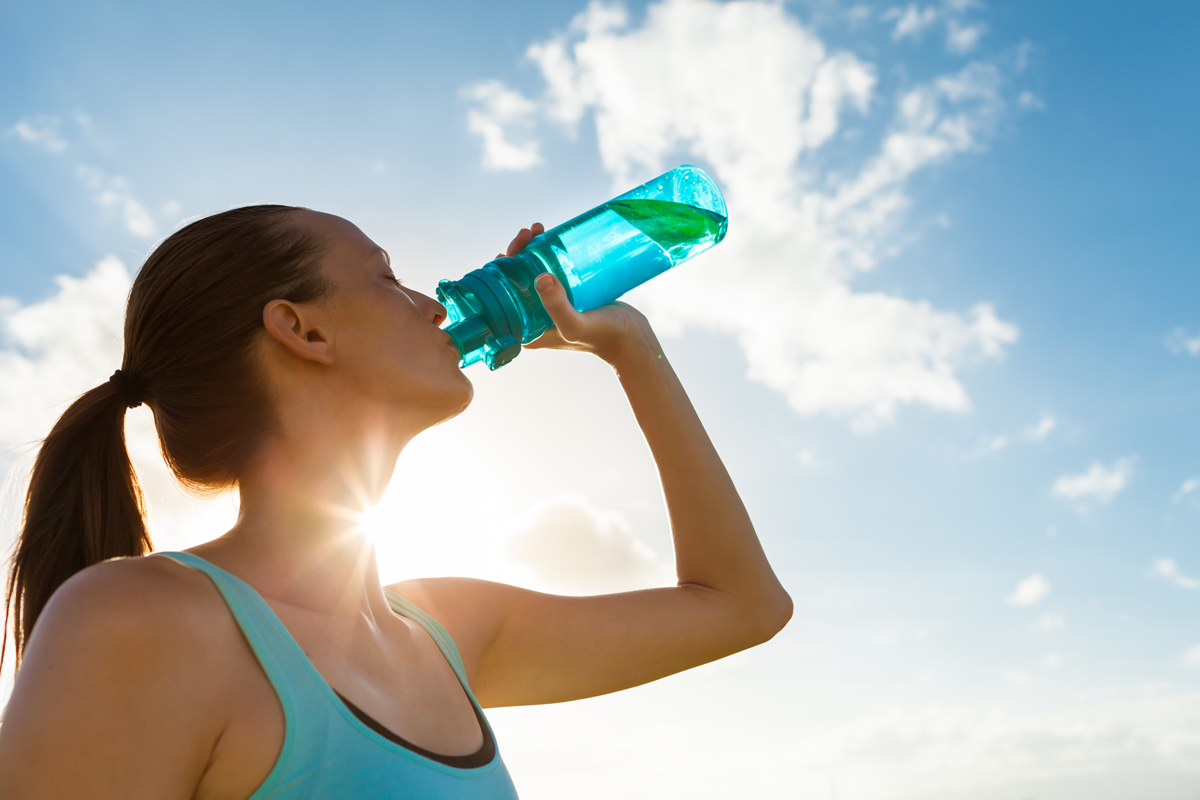
The demand for water for each body is very diverse, so it is difficult to create recommendations that will be perfect for everyone. Most people lose water during physical activity, but not only then the body needs hydration. During physical work and also rest the water should be replenished. Man loses water through the skin along with the sweat, in the urine, through the lungs and with the feces. Over the entire day, a person loses about 2200-2600 ml. The sodium content is of great importance for athletes and active people, because they tend to sweat more of the body and then the starts of this ingredient are very large.
Dehydration is one of the greatest enemies of a man, especially a runner. First of all, what is important, with light dehydration, we lose up to 11% of the VO2 max (the maximum minute oxygen cap that tells you how much oxygen you can deliver to your muscles during one minute of hard work). It can also disrupt the work of joints and cause sticking of the fascia between the overheated tissues.
The article, which was published in 1996 by the Biochemistry Journal, describes in detail what is happening in the human body in case of dehydration. Dehydrated muscle cells are unable to properly metabolize proteins and nutrients, which leads to a state in which they can not recover after training. Metabolism slows down through loss of electrolyte balance, and the body not only loses energy, but also the muscles. It is worth to take as a minimum two to three liters of liquids enriched with electrolytes of water every day.
Summary
It is very important to have the technique and setting the whole body naturally to increase the efficiency of running, to achieve better results and to reduce the risk of injury to a minimum. Kelly Starrett wrote in his book: "by improving the position, healthy and regenerated body, as well as work in the full range of joint mobility, you can find additional energy that will allow you to run further and longer. (...) Only the awareness and certainty that we are responsible for the operation of our machines as a mechanic is responsible for the operation of the car, can really change something. "


